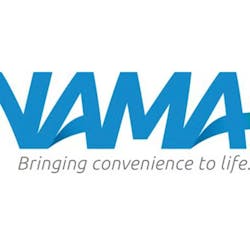The Patient Protection and Affordable Care Act of 2010 and the Health Care and Education Reconciliation Act of 2010 became law in March of 2010 and are already having dramatic impact on Americans’ health care. As these laws are phased-in over the coming years, and potentially changed by Congress in the coming months, it may transform how individuals and businesses purchase medical insurance. These health care changes will be felt by all households and businesses over the coming months. But they may impact the vending industry’s bottom line in unique ways.
Because of these changes, vending operators face an uncertain future regarding their medical insurance.
There continue to be many unknown impacts on this far reaching bill. For example, according to the Congressional Research Service, it is “impossible” and “currently unknowable” to determine the number of agencies, boards and commissions that will be created under the new federal health care reform law.
The more than 2,000-page legislation will continue to face years of legal challenges, regulatory review and practical implementation in the free market. But as the legislation is studied, rules are written and the free market starts to operate, vending operators should consider several specific ways this law will impact their businesses.
Coverage needed by 2014
The law requires that every individual have personal health care coverage by Jan. 1, 2014. Individuals who don’t have health insurance will face a financial penalty. These individuals who need insurance can purchase it through five different types of plans including: state insurance exchanges, employer-sponsored plans, individual insurance plans, grandfathered group plans, and other coverage “recognized by the Secretary of Health and Human Services in coordination with the Secretary of the Treasury.”
Of concern to the vending industry should be the federal health care reform law on employer-sponsored plans and grandfathered group plans.
The National Automatic Merchandising Association (NAMA) offers five steps your company should take on employer-sponsored or grandfathered health care plans.
First and no surprise, we recommend that everyone in the vending industry become a member of your association. NAMA has a bipartisan government affairs team working to minimize this new law on your company’s bottom line. The smart vending operator will remain a NAMA member so we can keep you informed of changes and keep fighting to protect your company. Non-members may ultimately reap the rewards of NAMA’s efforts, but existing members will receive information first and will be the first to respond to changes.
For example, the health care law requires that soon anyone who owns or operates 20 or more vending machines will have to disclose the calorie count of all food and beverages sold in their machines. The Food and Drug Administration is currently writing the rules on how calorie disclosure will take place. Some argue that a label on the front of the packaging is the solution. Others recommend a calorie label at each spiral or stack. NAMA prefers one menu which lists the calorie counts of all products which might be in a bank of machines.
We know that the new health care law requires calorie labeling. What the FDA will require isn’t yet known.
But the members of NAMA have a seat at the table, and will be the first to know in the Spring of 2011 how they must comply with calorie labeling regulations.
Threshold: 50 employees
Second, vending companies must be careful when you grow beyond 50 employees. If you have 50 or fewer employees, you may receive tax credits and assistance today. You won’t face federal penalties in the future. However, once this aspect goes into effect in 2014, if you have more than 50 employees, you face new health care regulations, potential fines and changes. For example, if you have 51 employees and just one on your team uses a state insurance exchange, you will face a penalty of $3,000 for each employee in the exchange, or $2,000 for each full-time employee (FTE) excluding the first 30 workers ( $ penalty = Number of FTE – 30 X $2,000).
Under this scenario, many small businesses with more than 50 employees may debate canceling their insurance package, raising salaries to compensate for lost insurance and paying the above mentioned penalty. These small businesses argue that the penalty is much less than their current health care insurance premiums.
For example, in 2009 the typical small business paid $4,824 for individual health insurance coverage for an employee. The proposed 2014 penalty for not offering insurance may be $2,000. So there might be a financial incentive of $2,824 for a small business to have their team members seek insurance in a state insurance pool, rather than to offer coverage as an employee benefit.
This is a legitimate strategic decision for companies to consider. Economists are working to predict what small businesses may do in this scenario. But before a small business cancels insurance, there are other issues to consider. For example, health insurance premiums are currently tax deductible. So a small business’ insurance costs might be lower than it appears. In addition, if a company doesn’t offer insurance, it may no longer be a competitive employer in a local job market. And obviously, many small businesses are very close to their employees and will want to offer them insurance – regardless of costs. But the bottom line is that employers must be careful when you grow beyond 50 employees.
Are ‘grandfathered’ plans safe?
Another concern facing businesses is how to keep an insurance plan which the company and/or the employees like. Many companies want to keep their existing health insurance and don’t want to participate in the plans created in the health care legislation. These existing plans are called “grandfathered group plans.” These are group health plans which were in existence on March 23, 2010, the day the legislation was signed into law by President Obama.
The Patient Protection and Affordable Healthcare Act (PPACA), created a multitude of new requirements for group health plans ranging from the minimum level of benefits that must be provided to dictating which individuals must be offered coverage under a plan. Various provisions of the new law either do not apply at all or have extended compliance deadlines for what it refers to as "grandfathered plans."
If a health plan is “grandfathered” then the new law doesn’t impact it. President Obama regularly said that “if you like your health plan, you can keep it.” He is correct. However, if your grandfathered health plan has made any “significant changes” such as cost increases to deductibles or co-payment, your plan may have lost its grandfathered status. If this has happened, then the above new regulations, penalties and changes will start to apply.
NAMA’s third recommendation is that if your health plan is grandfathered, don’t make any changes. Don’t increase deductibles, increase copays or decrease your coverage.
Plans which were in effect on March 23, 2010 should be safe if only minor changes are adopted. The federal government is currently writing rules on what constitutes significant or minor changes. The Internal Revenue Service, Department of Labor and Department of Health and Human Services jointly issued interim final regulations in mid-November regarding a health plan's status as a grandfathered health plan.
It appears as if your health insurance plan will lose its grandfathered status if changes are made to the plan's coverage that significantly decrease the benefits, greatly increase costs to employees or paid by participants.
What are items which will eliminate your grandfathered status? The following are examples of some items which could cause a change: increasing an employee's portion of all costs from 20 percent to 25 percent, increasing fixed-amount copayments by $5, decreasing the employer contribution rate by more than 5 percent, or removing benefits. So if you can, try to keep your existing plan by maintaining current benefits.
It might be significantly better then newer proposed health care plans.
Consider a wellness plan
NAMA’s fourth recommendation is to implement a wellness program at your company, and help all your accounts implement a wellness program for their employees. For example, NAMA’s Fit Pick and Balanced for Life calorie disclosure and wellness programs should be used at your company and with all your accounts.
The reason for this recommendation is that one cause of increases in health care costs relates to health problems caused by individual behavioral issues. Individual behavior is the single greatest determinant to health status. Obesity, coronary heart disease, diabetes and hypertension are all increasing. Companies that want to lower health care insurance rates will implement wellness programs, tobacco cessation programs, and exercise incentives.
Encouraging employees into a healthier lifestyle will reduce health care costs. According to Barry Arbuckle, president and CEO of MemorialCare Health Systems, “wellness activities can save $1.49 to $4.91 for every dollar spent, reduce absences by 30 percent and help recruit, retain and increase employee productivity.” There may even be some tax credits or incentives from the government to support wellness programs.
So there are several business benefits to a wellness program, including healthier employees, lower health insurance premiums and potential tax credits.
This legislation also has potential benefits to the public. There are some positive items in the health care law, particularly if you are currently without health insurance, have pre-existing medical conditions, want to keep your younger children insured or if you will adopt a child. There are tax credits available today for small businesses with fewer than 25 employees. Many vending operator employees will benefit from these expanded opportunities. Families with children with pre-existing conditions will be particularly helped. But the rules are complicated, have many exemptions and may take an insurance or tax expert to translate.
Due to these complications in the tax code and the federal legislation, NAMA’s fifth recommendation is that all businesses talk with an insurance agent and your accountant before making any changes to your health care plans.
As the law begins to be implemented there are many unknowns. In addition to votes taken in Congress, new taxes which are going to be implemented, regulations written and law suits settled, the free market will also begin to impact the way we use medical insurance.
Republicans in the U.S. House of Representatives are planning on a formal vote to repeal the entire law when the new Congress gets to work this January. They have also publicly pledged to block federal funding for implementation of the law.
In addition, the courts are currently hearing challenges to the constitutionality of the law. And since there was no “severability clause” in the legislation, if just one legal case is successful, the entire reform measure may be held unconstitutional.
So the impact of health care reform on your business is evolving. Politicians, bureaucrats, courts and health care experts will continue to make changes in this area.
Yet one thing is very clear. Vending companies must focus resources to understand how these new changes will impact your company and employees. But if you follow the above suggestions, your company will be better able to adapt to the coming changes than your competitors.




